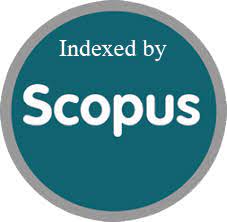Negligence in Robotic Surgery: Establishing Duty of Care in Legal Cases
DOI:
https://doi.org/10.52783/jns.v14.4059Keywords:
medical technology, duty of care, robotic surgery, artificial intelligence in healthcare, legal liability, medical malpracticeAbstract
The incorporation of cutting-edge technologies, such as robotic surgery, artificial intelligence-driven diagnostics, and automated medical devices, is bringing about a revolution in the healthcare industry, but it also brings about substantial legal issues. The duty of care, which is a fundamental premise in the practice of medicine, needs to develop in order to accommodate these developments while simultaneously assuring the safety of patients and maintaining ethical standards. In the context of high-tech medical practices, the ever-evolving legal doctrines and the obligations of healthcare professionals, technology developers, and institutions are being discussed. It addresses difficulties such as establishing the scope of duty of care, the complications of various stakeholders participating in patient care, and the legal ramifications of artificial intelligence and automation in the healthcare industry. The transition toward product liability frameworks for medical technologies, with a special emphasis on robotic surgery. For the purpose of better managing the junction of technology and medicine, it is proposed that recommendations be made for improving legal and ethical oversight. These recommendations include the establishment of robust regulatory frameworks and the improvement of training for healthcare workers. The importance of dynamic legislative norms that guarantee both innovation and patient protection is emphasized in the chapter which highlights the fact that technological advancements are continuing. A method that involves collaboration between specialists in the fields of law, medicine, and technology in order to protect the rights of patients in a healthcare setting that is becoming increasingly automated.
Downloads
Metrics
References
Osama, M.; Ateya, A.A.; Saye d, M.S.; Hammad, M.; Pławiak, P.; Abd El-Latif, A.A.; Elsayed, R.A. Internet of Medical Things and Healthcare 4.0: Trends, Requirements, Challenges, and Research Directions. Sensors 2023, 23, 7435.
OECD. Artificial Intelligence in Society [Internet]; OECD: Paris, France, 2019; ISBN 978-92-64-58254-5.
Andrès, E.; Talha, S.; Zulfiqar, A.-A.; Hajjam, M.; Ervé, S.; Hajjam, J.; Gény, B.; Hajjam El Hassani, A. Current Research and New Perspectives of Telemedicine in Chronic Heart Failure: Narrative Review and Points of Interest for the Clinician. J. Clin. Med. 2018, 7, 544.
Abbasi Habashi, S.; Koyuncu, M.; Alizadehsani, R. A Survey of COVID-19 Diagnosis Using Routine Blood Tests with the Aid of Artificial Intelligence Techniques. Diagnostics 2023, 13, 1749.
Alhazmi, A.K.; Alanazi, M.A.; Alshehry, A.H.; Alshahry, S.M.; Jaszek, J.; Djukic, C.; Brown, A.; Jackson, K.; Chodavarapu, V.P. Intelligent Millimeter-Wave System for Human Activity Monitoring for Telemedicine. Sensors 2024, 24, 268.
Almasoud, A.S.; Mengash, H.A.; Eltahir, M.M.; Almalki, N.S.; Alnfiai, M.M.; Salama, A.S. Automated Arrhythmia Classification Using Farmland Fertility Algorithm with Hybrid Deep Learning Model on Internet of Things Environment. Sensors 2023, 23, 8265.
Bhakar, S.; Sinwar, D.; Pradhan, N.; Dhaka, V.S.; Cherrez-Ojeda, I.; Parveen, A.; Hassan, M.U. Computational Intelligence-Based Disease Severity Identification: A Review of Multidisciplinary Domains. Diagnostics 2023, 13, 1212.
Caggiari, S.; Jiang, L.; Filingeri, D.; Worsley, P. Optimization of Spatial and Temporal Configuration of a Pressure Sensing Array to Predict Posture and Mobility in Lying. Sensors 2023, 23, 6872.
Oberije, C.J.G.; Sharma, N.; James, J.J.; Ng, A.Y.; Nash, J.; Kecskemethy, P.D. Comparing Prognostic Factors of Cancers Identified by Artificial Intelligence (AI) and Human Readers in Breast Cancer Screening. Cancers 2023, 15, 3069.
Talha, S.; Lamrous, S.; Kassegne, L.; Lefebvre, N.; Zulfiqar, A.-A.; Tran Ba Loc, P.; Geny, M.; Meyer, N.; Hajjam, M.; Andrès, E.; et al. Early Hospital Discharge Using Remote Monitoring for Patients Hospitalized for COVID-19, Regardless of Need for Home Oxygen Therapy: A Descriptive Study. J. Clin. Med. 2023, 12, 5100.
Khosravi, P.; Schweitzer, M. Artificial Intelligence in Neuroradiology: A Scoping Review of Some Ethical Challenges. Front. Radiol. 2023, 3, 1149461.
Bellini, V.; Brambilla, M.; Bignami, E. Wearable Devices for Postoperative Monitoring in Surgical Ward and the Chain of Liability. J. Anesth. Analg. Crit. Care 2024, 4, 19.
Wu, X.; Wu, Y.; Tu, Z.; Cao, Z.; Xu, M.; Xiang, Y.; Lin, D.; Jin, L.; Zhao, L.; Zhang, Y.; et al. Cost-Effectiveness and Cost-Utility of a Digital Technology-Driven Hierarchical Healthcare Screening Pattern in China. Nat. Commun. 2024, 15, 3650.
Poullet, Y. The Law Facing the Developments of Artificial Intelligence in the Field of Health. Rev. Lamy Droit L’immatériel 2018, 152, 43–51.
Saenz, A.D.; Harned, Z.; Banerjee, O.; Abràmoff, M.D.; Rajpurkar, P. Autonomous AI Systems in the Face of Liability, Regulations and Costs. NPJ Digit. Med. 2023, 6, 185.
Downloads
Published
How to Cite
Issue
Section
License

This work is licensed under a Creative Commons Attribution 4.0 International License.
You are free to:
- Share — copy and redistribute the material in any medium or format
- Adapt — remix, transform, and build upon the material for any purpose, even commercially.
Terms:
- Attribution — You must give appropriate credit, provide a link to the license, and indicate if changes were made. You may do so in any reasonable manner, but not in any way that suggests the licensor endorses you or your use.
- No additional restrictions — You may not apply legal terms or technological measures that legally restrict others from doing anything the license permits.










